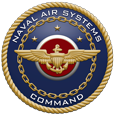Martin-Baker delivers 1,000th common ejection seat
By J.C. Milliman
NAVAIR Public Affairs
NAVAL AIR SYSTEMS COMMAND, NAS Patuxent River, MD -- Saying that Naval aviators deserve the best ejection seats available, officials from England’s Martin-Baker Aircraft Company delivered the 1,000th Navy Aircrew Common Ejection Seat in a ceremony held at the NAVAIR headquarters here Sept. 14.
"We are proud of our association with the U.S. Navy, our largest and most valued customer," stated James Martin, joint managing director of Martin-Baker and son of company founder, Sir James Martin, as he gave the seat to NAVAIR commander, Vice Adm. John Lockard.
Since the first actual ejection by a Naval aviator using a NACES to eject from an F/A-18 May 15, 1992, 26 aviators have used the system and all without injuries.
"We’ve averaged three ejections a year since 1992 with no injuries," Martin stated. "We also have a 100 percent ground safety record."
"This seat represents the great achievements in aircrew survivability made possible by [Martin-Baker], all the contributing sub-contractors on this project and the tireless efforts of the PMA-202 team. It has provided a means for countless Naval aviators to concentrate on the mission free from worry about their own safety in the event of an ejection," said Lockard. "A tremendous burden has been lifted from aviators who already have enough to contend with in today’s complex cockpits."
Aircraft using the NACES include the F-14, F/A-18, F/A-18 E/F "Super Hornet," and the T-45.
The NACES system boasts a number of "firsts," according to Martin. Among them: it is the first microprocessor-controlled ejection seat (enabling deployment of the parachute in less than a half second); the first with a five-year warranty; and the first with electronic logistical data control.
Purchased in annual contracts, whose size is determined by aircraft production rates, the seat system has averaged about $25 million per contract over the past four to five years, according to Cmdr. Mark Baysinger, assistant program manager for fleet support, PMA-202. There are usually about 80 to 100 seat systems per contract with an average cost of $195,000 per seat.
By using one common ejection seat for different aircraft in the Navy’s inventory, logistics efforts and costs will be reduced, according to Lockard.
"This program was used as a pilot to represent 20 different Affordable Readiness Initiatives that have netted a total cost avoidance of more than $20 million," he said. "In particular, NACES Total Ownership Cost Initiatives will save the Navy $14.1 million over the next decade. That represents the careful stewardship of taxpayer dollars to this nation that is expected from the NAVAIR team."
But cost avoidance isn’t the most important aspect of the NACES, Lockard concluded.
"It’s about saving Naval aviators’ lives."
